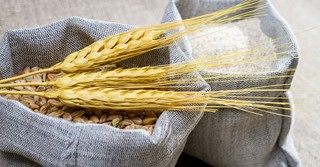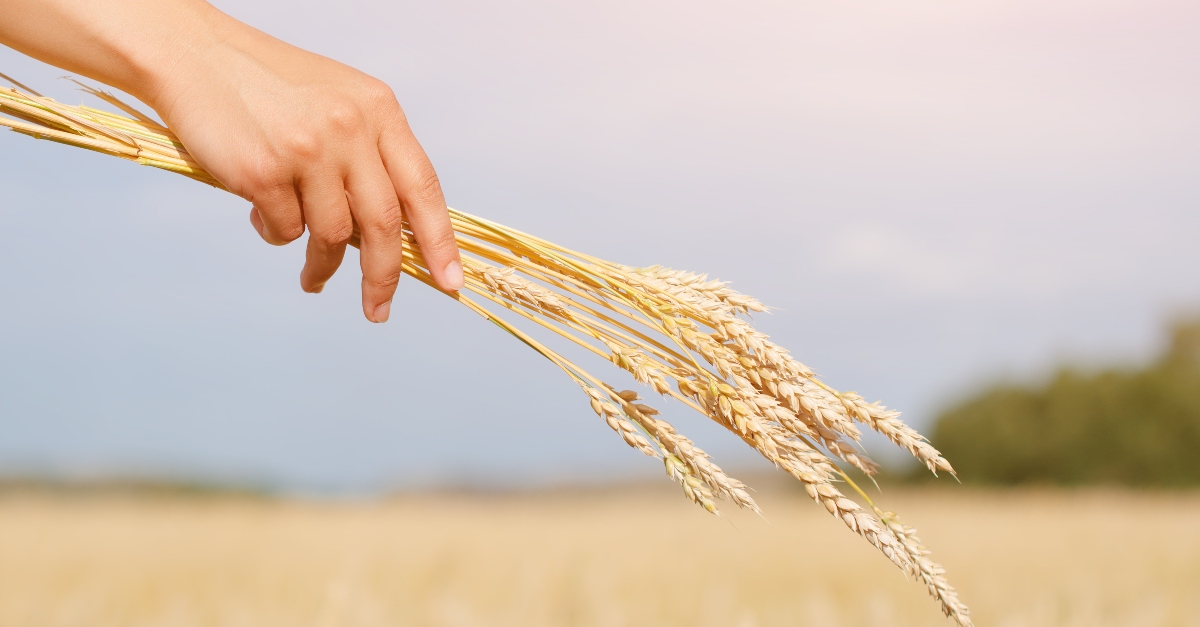Why Do We Sing about “Bringing in the Sheaves”?
Share

One day the Lord Jesus will return to the earth and gather up those who believed in Him, and then all who put their faith in Him throughout history will enter into eternity in Heaven. In the Bible, this event is referred to using the metaphor of a harvest at several points. Jesus used it during his ministry, and Paul referred to it during some of his writings. The Old Testament writers also made use of the metaphor of harvest, though the minor prophets like Micah and Amos used it in a different context.
A popular hymn from the 19th century called “Bringing in the Sheaves” made use of this imagery to encourage believers to share the Gospel. To bring in the sheaves refers to the idea that one day believers will come before the Lord, bringing others with them with whom they shared the Gospel.
What Does “Bringing in the Sheaves” Mean?
The metaphor of bringing in the sheaves has its roots in agricultural cycles and culture. Specifically, it comes from the process of the growing and harvesting of wheat, a staple of many cultures across the world.
Wheat is the foundation for making bread, a staple food. In order to make this common carbohydrate, the seed is planted and grows under the care of the landowner and his farmhands. Wheat from the previous year was sown to be used to facilitate the growth of the new round of planting. Long after the rainy season, the wheat should be ready to harvest.
The workers would go out into the field and harvest the wheat, bundling the stalks. These bundles are sheaves, the plural of sheaf, “a bundle of grain stalks laid lengthwise and tied together after reaping.” The farmhands brought the sheaves into the room where they would be threshed, a process of removing the grain from the wheat and barley by driving cows and oxen over the sheaves. Edible sections were separated from the inedible through winnowing. A winnowing staff or fork would scoop up what had been threshed and throw it into the wind; the heavy edible parts landed close by with a thud. The inedible, useless stalks and chaff were blown away.
In the hymn the sheaves do not refer to actual bundles of wheat, but rather, the sheaves are people. The field to be harvested is the whole world, full of people who need to hear and accept the Gospel. Christians are supposed to go out and fulfill the Great Commission; “Go therefore and make disciples of all nations, baptizing them in the name of the Father and of the Son and of the Holy Spirit, teaching them to observe all that I have commanded you” (Matthew 28:19-20a). By obeying this last instruction from the Lord Jesus, Christians are participating in a harvest.
The hymn has the lines, “Going forth with weeping, sowing for the Master, though the loss sustained our spirit often grieves; when our weeping's over, He will bid us welcome, we shall come rejoicing, bringing in the sheaves.” In Jesus’ parables, He is often portrayed as a bridegroom or a landowner for whom many wait, and one day He will arrive and embrace those who waited for Him. The hymn makes use of this imagery, as well as the picture of the harvest, to encourage believers to witness to others so they may bring others with them to wait, and then be welcomed, by God - called the Lord of the Harvest in Matthew 9.
Is the Phrase “Bringing in the Sheaves” in the Bible?
There are several verses in the Bible which refer to the harvesting of grain. Some of them are literal, some use the metaphor, and the symbolism is not always the same.
The verses that refer to it in a literal way, though it may carry some symbolism are:
- Ruth gleaned sheaves in Boaz’s fields: “She said, ‘Please let me glean and gather among the sheaves after the reapers.’ So she came, and she has continued from early morning until now, except for a short rest … When she rose to glean, Boaz instructed his young men, saying, ‘Let her glean even among the sheaves, and do not reproach her’” (Ruth 2:7&15).
- Job talks about the process of harvest to bemoan the difficulties of life: “They go about naked, without clothing; hungry, they carry the sheaves; among the olive rows of the wicked they make oil; they tread the winepresses, but suffer thirst” (Job 24:10-11).
- The Psalmist wishes to see the enemies of God not have a fruitful harvest: “Let them be like the grass on the housetops, which withers before it grows up, with which the reaper does not fill his hand nor the binder of sheaves his arms” (Psalm 129:6-7).

Photo credit: ©Getty Images/Mikhail Azarov
The verses where sheaves serve as symbolism, though not in the same way as the hymn are:
- Joseph’s dream where the sheaves represent his family: “Behold, we were binding sheaves in the field, and behold, my sheaf arose and stood upright. And behold, your sheaves gathered around it and bowed down to my sheaf” (Genesis 37:7).
- In the prophecies of Jeremiah: “Speak: ‘Thus declares the Lord, ‘The dead bodies of men shall fall like dung upon the open field, like sheaves after the reaper, and none shall gather them’” (Jeremiah 9:22).
- In the prophecies of Amos referring to the disobedient: “Behold, I will press you down in your place, as a cart full of sheaves presses down” (Amos 2:13).
- In the writings of Micah: “But they do not know the thoughts of the Lord; they do not understand his plan, that he has gathered them as sheaves to the threshing floor” (Micah 4:12).
- In the prophecies of Zechariah: “On that day I will make the clans of Judah like a blazing pot in the midst of wood, like a flaming torch among sheaves. And they shall devour to the right and to the left all the surrounding peoples, while Jerusalem shall again be inhabited in its place, in Jerusalem” (Zechariah 12:6).
What Is the Background of this Hymn?
“Bringing in the Sheaves” is an American Gospel song by Knowles Shaw. Taking inspiration from Psalm 126, Shaw wrote the lyrics in 1874; he wrote music as well, though today a separate tune composed by George Minor in 1880 is the more commonly used tune. He was born in Ohio in 1834 and was a writer and evangelist as well as a composer.
The verse from which Shaw extracted his concept was Psalm 126. The specific verses said, “He who goes out weeping, bearing the seed for sowing, shall come home with shouts of joy, bringing his sheaves with him” (Psalm 126:6).
In this short poem, the writer cried out for God to restore the fortunes of Zion. In this passage, the righteous who patiently wait for the Lord will bring in their harvest, blessed for their right relationship with God and their endurance of trials and sufferings. The hymn writer took this verse about the state of the righteous in Israel, and set it in the light of the birth, death, and resurrection of the Messiah, Jesus, and His future return.
It is believed Knowles Shaw baptized over ten-thousand people. He died in a train wreck in Texas in 1878.
How Does This Phrase Encourage Us to Reach Others for Christ?
This hymn focuses on the tension of earthly life, between struggles in a world full of sin, and the future joys of eternity with the Lord. It acknowledges in the first verse the difficult labor of living in the world and trying to reach others for Christ. The second and third verses also reference these struggles, but each one ends with the hopeful refrain, “we shall come rejoicing, bringing in the sheaves.”
It is encouraging to know that obeying the Great Commission will one day be a source of great joy. Being able to see others in Heaven that God used you to bring into His kingdom will be a reason for rejoicing. There are many reasons to become despondent when toiling in the harvest, praying for the salvation of others, and feeling like it is not enough. “Bringing in the Sheaves” reminds believers the most important thing they can do is work in this labor, which will be rewarded one day by the Lord of the Harvest.
Sources
Baxter, William. The Life of Knowles Shaw, Singing Evangelist. Cincinnati: Central Book Concern, 1879.
De Vaux, Roland. Ancient Israel Its Life and Institutions. Grand Rapids: William B. Eerdmans Publishing Company, 1958.
Eims, David and LeRoy. Laboring in the Harvest. Colorado Springs: NavPress, 2011.
Kalinak, Kathryn. How the West Was Sung Music in the Westerns of John Ford. Berkley, University of California Press, 2007.
Related articles
The Beautiful Meaning behind the Old Hymn "Blessed Assurance”
What Is Evangelism, and Are We Doing it Wrong?
5 Myths about Evangelism
Photo credit: ©Getty Images/Shaiith
Bethany Verrett is a freelance writer who uses her passion for God, reading, and writing to glorify God. She and her husband have lived all over the country serving their Lord and Savior in ministry. She has a blog on graceandgrowing.com.